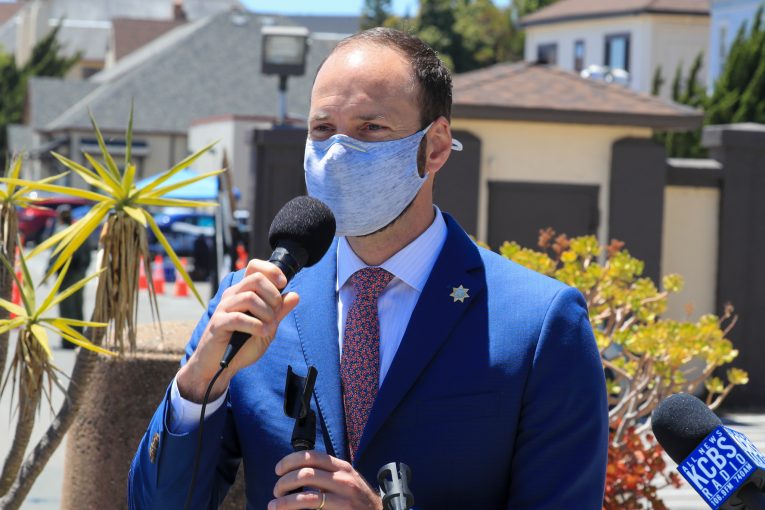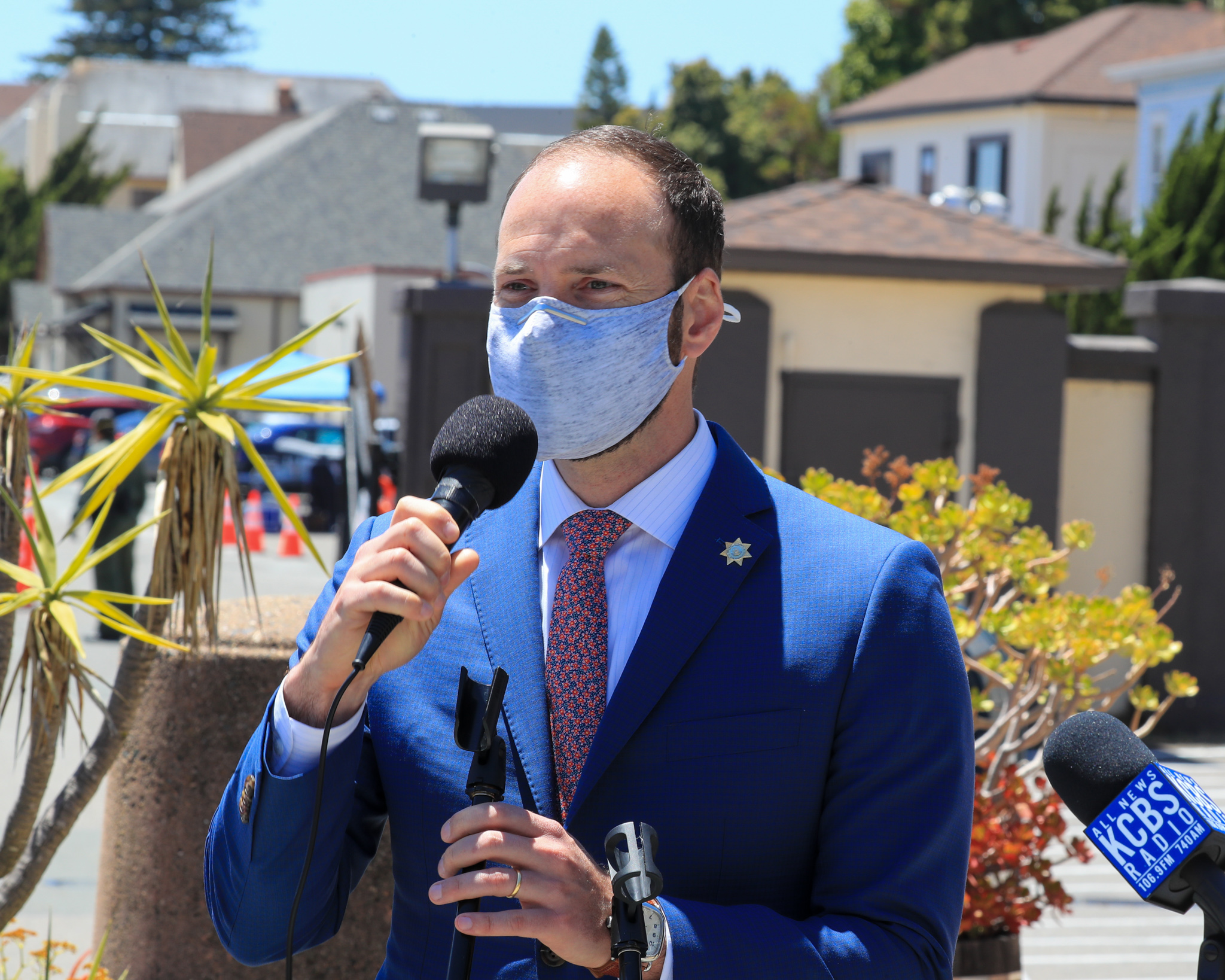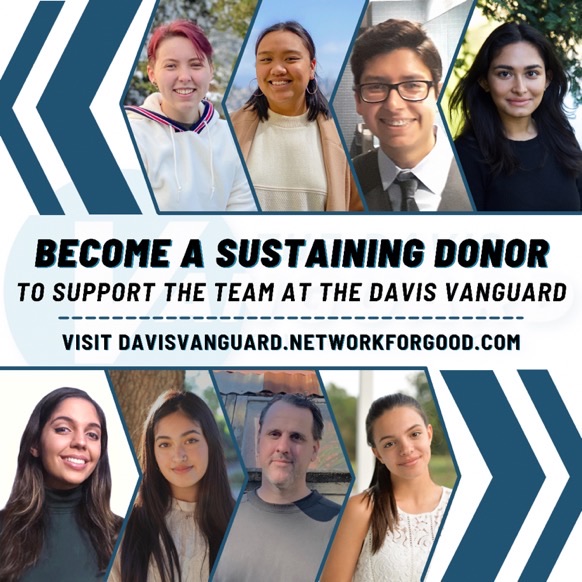

By Elina Lingappa
SAN FRANCISCO, CA – Rory Fleming has published an article in The Filter Magazine titled, “Scapegoating of Chesa Boudin Reflects Ugly Attitudes to Unhoused People,” a piece which began to unpack the dialogue driving much of the “tough-on-crime” rhetoric taking San Francisco by storm.
“Perhaps nothing triggers some San Francisco residents more than District Attorney Chesa Boudin,” Fleming wrote, “[e]lected on a platform of criminalizing poverty and homelessness.”
District Attorney Boudin has found himself in the midst of enormous public scrutiny, much of which is misguided, supporters claim.
Not least among these efforts is a recall campaign headed by Richie Greenberg, a political commentator who has driven questionable rhetoric about San Francisco’s crime rates over the past two years.
More recently, reporter Dion Lim for the Washington Post falsely accused Boudin of dropping charges on a carjacking assailant, publishing a viral article spreading the misinformation.
In the midst of complaints driven by public figures such as Lim and Greenberg, many San Franciscans have added the city’s large, unhoused population to the list of complaints about Boudin’s  office.
office.
Boudin has indeed been vocal in his support of decriminalizing the unhoused since his initial campaign for District Attorney.
However, as Fleming reveals in his article, the public rhetoric against Boudin’s policies is not only opposed to San Francisco’s progressive image, but it also speaks to a longstanding trend in the city’s history.
The housing crisis as it exists now came into being in the 1980s, according to NPR reporter and Freakonomics producer Greg Rosalsky, who wrote a recent article on this history of Californian policy impacting unhoused people.
During this time, the federal government cut much of the housing aid budget, as the state of California simultaneously slashed funding for social services and mental health care. Thus, residents who were already facing hardship found themselves with little to no safety net, and many became unhoused, Rosalsky argues.
The problem only worsened in the coming years.
San Francisco passed a rent control law in 1994, but landlords and homeowners soon found loopholes in the legislation. Evictions continued, and numerous units were taken off the market, decreasing the rental supply further.
San Francisco’s notorious cost of living acted as the nail on the coffin as big tech began to take hold more recently.
The city has reflected a study done by Zillow economists in 2018, which found that as residents spend more than a third of their income on housing, the population of unhoused people spikes.
In 2018, the Department of Housing and Urban Development found that a family making $117,400 in the San Francisco area is “low income,” because the median rent for a one bedroom apartment in the city is $3,700/month according to Fleming.
Unsurprisingly, as the cost of living skyrockets, so does the number of displaced and unhoused residents.
The current unhoused population is now over 8,000 in San Francisco, and an astounding 151,000 in the state of California in 2020.
The problem has reached an unprecedented scale.
At one point in 2018, a UN official, Leilani Farha, even commented on the state of the Bay Area in a report titled, “On Adequate Housing As a Component of the Right to an Adequate Standard of Living.”
Living.”
“[The situation] constitutes cruel and inhumane treatment and is a violation of multiple human rights, including the rights to life, housing, health and water sanitation… The right to a secure home is a universal right under international human rights law. Lack of security of tenure can never justify forced evictions of those residing in informal settlements,” she wrote in her critique of Bay-Area policies.
“Most people on the streets are living with some sort of structural trauma,” she continued, meaning they have lost their job, can’t afford housing, been evicted by a landlord. The structural trauma causes deeply personal effects that can lead to living on the street that triggers drug use.
Despite this history and context, much of the hardship is met with misunderstanding by many Bay Area residents.
“Unfortunately, its liberal reputation aside, San Francisco has a strong conservative streak that has aligned against the working class, our unhoused neighbors, and the reforming of our criminal justice system,” local defense attorney John Hamasaki told Fleming.
In this fashion, many San Franciscans have taken to blaming the unhoused populations themselves, and calling for more robust tough-on-crime policies.
Thus, when District Attorney Chesa Boudin began speaking publicly about decriminalization, he was faced with substantial pushback.
According to the Prison Policy Initiative, formerly incarcerated people are 10 times more likely to be unhoused than the general public, and these demographics are disproportionately women, people of color, and those older than the age of 45.
These trends are not surprising, given that a criminal record has massive consequences on both employment and housing opportunities for previously incarcerated people, according to the National Alliance to End Homelessness.
To complete the cycle, unhoused residents are far more likely to have encounters with law enforcement, even for actions as minor as sleeping on the street. Thus, we are left with what The Prison Policy Initiative calls a “revolving door” of incarceration, said the Alliance.
Most individuals experiencing houselessness have either been evicted, lost a job or are fleeing an abusive partner, according to studies noting drug abuse and criminal acts committed out of desperation only come after most people have been caught up in the revolving door—despite much of the right-wing rhetoric about unhoused people.
While the claim that unhoused people resist change and help has been popularized, aid is far more inaccessible than is often realized.
For example, according to The Conversation Magazine, many emergency shelters exclude specific populations, most commonly families, LGBTQ youth, and unhoused people with pets.
The magazine expands, “anti-vagrancy laws are counterproductive because they make it harder to escape homelessness.” Besides those directly experiencing houselessness, taxpayers suffer the consequences as well.
In 2015 alone, the city of San Francisco paid $20.6 million for arrests on the grounds of misdemeanor quality-of-life charges, totaling 125 arrests.
Chesa Boudin is not alone; politicians and District Attorneys nationwide have come to recognize the negative effects of tough-on-crime laws.
Nobody has exemplified this more than Boston District Attorney Rachel Rollins.
According to her campaign website, Rollins has promised to halt prosecution of 15 low-level crimes, including drug possession. Each of these low-level crimes disproportionately impacts the unhoused population by a huge margin.
Several academic sources have found Rollins’ policies to be beneficial, including Anna Harvey of New York University.
Harvey’s research found that defendants who were not prosecuted for lower-level nonviolent misdemeanors faced 65 percent fewer misdemeanor arrests in the following years and 75 percent fewer felony arrests than those who were prosecuted initially.
Thus, the rhetoric that Boudin is letting the city fall into turmoil falls short, according to those statistics.
Not only has research proven that alternatives to prosecution are more beneficial for public safety, but Boudin’s policies are not nearly as radical as Rollins’.
In fact, according to Fleming, Boudin only promised to halt prosecution on drug possession in the event of a pretextual car stop, a long way from the 15 crimes that Rollins has stopped prosecuting.
 Elina Lingappa is a sophomore at the University of San Francisco double majoring in Sociology and Politics. She is originally from Seattle, Washington, and she is deeply passionate about the spheres of criminal justice and education equity.
Elina Lingappa is a sophomore at the University of San Francisco double majoring in Sociology and Politics. She is originally from Seattle, Washington, and she is deeply passionate about the spheres of criminal justice and education equity.





Car break-ins increased 750% in San Francisco’s tourist spots
https://www.kron4.com/news/bay-area/san-francisco-car-break-ins-on-the-rise-in-this-particular-area/
“According to the latest crime data from San Francisco police, the city’s central station has seen an increase of theft from vehicles. From May 2020 compared to May 2021 — went up 753%. The area includes Fisherman’s Wharf and Chinatown.”
San Francisco, Hostage to the Homeless
Failure to enforce basic standards of public behavior has made one of America’s great cities increasingly unlivable.
https://www.city-journal.org/san-francisco-homelessness
“The combination of maximal tolerance for antisocial behavior, on the one hand, and free services and food, on the other, acts as a magnet. “San Francisco is the place to go if you live on the streets,” observes Jeff, the 50-year-old wino and drug addict . . . . . Suggesting that some of the homeless are making a choice is heresy in official circles . . . . . Actually, it’s the homeless themselves who suggest that their condition has a large voluntary component. Jeff has been offered housing by numerous outreach workers and could come off the streets if he wanted to, he says. A man standing outside the city’s latest shelter prototype . . . says that he was offered housing four times but always turned it down. “I don’t know if I didn’t want to give up drugs, but I could’ve went in way before now.” “
Yeah, I had read that. I wonder if this is what San Francisco is going to see going forward now that the pandemic is letting up and tourists are returning to SF?
And maximum tolerance for crime…
Alan, did you know that David doesn’t consider City-Journal (that you cited) a reliable source?
But look at some of the sources used in this article, I wonder if David considers them all reliable?
The Filter Magazine
NPR reporter and Freakonomics producer Greg Rosalsky
UN official, Leilani Farha
National Alliance to End Homelessness.
The Prison Policy Initiative
The Conversation Magazine
May 2020 there were probably not very many cars to break into in tourist locations in SF.
True dat . . . but it wouldn’t have been such glorious clickbait. Our media s¨cks. I would like to see the 2019 vs. 2021 numbers, but I guess KRON couldn’t be bothered to think logically when faced with the opportunity for so many clicks.
And yet, you chose it and you linked it and you quoted from it.
You noticed . . . . #sniff#
That’s another thing to ponder. Has Boudin benefitted from the pandemic in that it kept the crime numbers down where now that things are opening back up is crime going to soar even higher than before as a result of his policies?
https://sanfrancisco.cbslocal.com/2021/06/29/poll-san-francisco-residents-consider-relocating-as-crime-worsen-quality-of-life-in-a-decline/
Hopefully for that city, that 40% includes all of the criminals (along with Boudin). 🙂
Good job illustrating that mainstream news can do bad journalism as well. They cite a poll, no link to it, no information about how the poll was conducted. So we have no idea whether this was a random survey or a non-random survey of their members.
I thought that the Chamber of Commerce was one your organizational heroes. 🙂
David, if the poll had favorable numbers for Boudin you or one of your interns would’ve most likely written a glowing article about it.
I didn’t write anything about the poll, because I wasn’t able to read the poll or how it was conducted. It could be alright, it could be non-random. Can’t tell from the article or the Chamber site.
BTW, there are plenty of polls where I like the results but I don’t trust them so we don’t write stories on those polls.